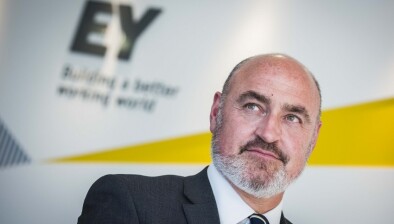EY: Profit warnings from listed companies with a DB pension scheme increased 38% year-on-year

Karina Brookes
Profit warnings issued by UK-listed companies with a defined benefit (DB) pension scheme increased by 38% year-on-year in the third quarter of 2022.
EY-Parthenon’s latest Profit Warnings analysis finds that the number of profit warnings issued by UK-listed firms with a DB scheme rose from 13 in Q3 2021 to 18 in Q3 2022. In total, 21% of all profit warnings from UK-listed companies in Q3 2022 came from firms sponsoring a DB pension scheme, compared to 25% in Q3 2021.
Of the total 1,217 UK-registered listed companies, 258 sponsor a UK DB pension scheme.
Across all listed UK companies, 86 profit warnings were issued in Q3 2022 – the highest third-quarter total since 2008 and an increase of 69% year-on-year from Q2 2021, when 51 were issued. The rise has been driven by a significant increase in warnings from consumer sectors which rose almost three-fold year-on-year.
More than half of DB sponsors to have issued a profit warning during Q3 2022 (10 out of 18) were constituents of consumer-facing sectors, including FTSE Personal Care, Drug and Grocery Stories, FTSE Food Producers and FTSE Travel and Leisure. These sectors have been particularly sensitive to inflationary pressures and hard hit by falling consumer confidence.
Of the 18 profit warnings issued by UK-listed DB sponsors in Q3 2022, 11 cited rising costs and overheads as the principal driver of the warning; three warnings were led by labour market issues (17%). Supply chain challenges which had accounted for 38% of warnings in Q3 2021, featured in just two warnings during Q3 2022.
Across all UK-listed companies, 28 have issued their third consecutive profit warning in the last year and are in the three warning ‘danger zone’. On average, one-in-five companies delist within a year of their third warning, most due to insolvency. Of the 28 companies currently in the danger zone, six have a DB pension scheme.
Karina Brookes, UK Pensions Covenant Advisory leader and EY-Parthenon partner, commented: “UK companies have been buffeted by headwinds from every direction through the first nine months of the year. Rising interest rates and inflationary pressures are seriously exacerbating existing challenges of rising costs and ongoing supply chain disruption, which is particularly acute for consumer-facing businesses, where falling retail sales and diminished consumer confidence is also now having a big impact.
“Many sponsors of defined benefit pension schemes running liability-driven investment strategies have also faced short-term liquidity issues amid unprecedented moves in UK government bond markets. In some cases, the only option for trustees has been to ask sponsors for additional funding to bridge the gap.
Ms Brookes concluded: “With limited signs of relief for sponsors’ cost pressures over the near term, it’s crucial trustees closely monitor the strength of sponsor covenants for early signs of distress and engage in scenario or even contingency planning. Trustees and sponsors – especially for schemes already in the ‘danger zone’ – must work tightly together to balance contributions and underlying security to support the sponsor’s long-term survival.
“For schemes not yet in the ‘danger zone’, now is the time to consider any strategy adjustments to the scheme’s funding and investment strategies to ensure both sponsor and scheme remain aligned and able to face into the challenging economic climate.”

Leah Evans
Leah Evans, EY-Parthenon head of pensions risk transfer, added: “While the current economic outlook is challenging businesses on many fronts, DB pension schemes overall have benefited from rising UK gilt yields, which are driving reductions in long-term liabilities.
“However, the individual hedging ratio and asset allocation of each scheme means asset values will vary across the market – therefore this positive development to the funding level is not universal.
“Funding levels of many UK Defined Benefit Pension Schemes have improved significantly since the start of 2022. This has had a positive effect of opening up derisking routes to a greater number of schemes looking to lock in gains through investment changes or risk transfer solutions, such as insurance or consolidator transactions.
Ms Evans continued: “Yet, the combination of capacity constraints and increasing competition in the insurance market will make the market for buyouts a hotly contested space over the coming months and means schemes will need to be well prepared to obtain pricing.
“Now that the peak of the liability driven investment storm appears to have passed, trustees can review how their scheme fared. Trustees should reflect on the effectiveness of their governance, address any resilience issues and engage in improvements ahead of the new Own Risk Assessment requirement.”







